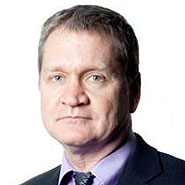Why more must be done to ensure bosses pay super


The Abbott government has plenty to say about allegations of bad behaviour by unions and union officials that are being investigated by the Heydon royal commission.
But the government is quiet – if not dumbstruck – on a crucial dynamic in Australia’s workplace relationships.
That is, while most employers “do the right thing” by their workers, a sizeable minority of them are rorters who underpay or exploit them.
• Abbott’s budget honeymoon over, shows new poll
• TV shows prompts patients to ditch life-saving drugs
• Stamp duty rises ‘nothing short of a scandal’
Take the requirement for employers to pay the 9.5 per cent Superannuation Guarantee (SG), which helps ease pressure on the public purse by reducing future reliance on the aged pension.
The Australian Tax Office reckons that, overall, Australian employers show a “high level of voluntary compliance”.
However, a recent report by the Australian National Audit Office revealed the ATO has internal risk assessments which found that non-compliance is an “endemic part of the superannuation system”.
The ATO documents said that between 11 to 20 per cent of employers might not be meeting their SG obligation. That is, one in five Australian employers might not be paying the right amount of super.
One reason the ATO believes that most employers meet their super obligations is the low rate of official gripes about unpaid super, which are known as employee notifications or ENs.
This rate of ENs is running at about 18,000 official complaints per year, or only 0.02 per cent of Australia’s 11.7 million employees.

Is you nest egg growing at the right speed, or going backwards?
But, as the audit report noted, research commissioned by the ATO shows that employees are reluctant to complain officially about unpaid super, partly for fear of retribution, which makes it an unreliable indicator of compliance.
Consider a letter written by a worried woman last week to Fairfax Media’s Money section. She explained that her husband worked for a struggling small business that had not paid his super account for more than a year.
“We find it hard to report the company to the ATO as it might mean big fines and subsequent closure,” she wrote. “My husband is 60 and can’t afford not to have the super paid, but he can’t afford to lose his job either. What do you suggest?”
The ATO says that non-compliance is a particular problem in small business and often fits into a broader pattern of dodgy behaviour, like employers failing to withhold employees’ income tax, paying cash-in-the-hand wages or wrongly treating employees as contractors.
The audit report found the ATO pursued complaints about super in a timely way, but that 54 per cent were finalised as “no further action” – often because the employer was insolvent.
Some of these insolvencies are deliberate and are part of a repeated pattern of “phoenix company” activities.
This occurs where a company deliberately enters into liquidation to avoid paying expenses such as creditors, taxes and employee entitlements. The directors transfer assets to a new entity, and continue operating the same or a similar business.
Phoenix activity is a particular problem in the construction industry which – as they say – has deep pockets and short arms when it comes to paying the bills.
The ATO says that research by Dun & Bradstreet shows that construction businesses are paying their bills in an average of 53 days, more than three weeks beyond the standard terms of 30 days.
Large companies were the slowest to pay their bills, taking an average of 56 days.
Remember that profit margins are tight and that insolvency can have a “domino” effect. The ATO has seen cases where one insolvency higher in a supply chain led to 44 lower-tier sub-contractors and suppliers facing “financial distress”, with many also becoming insolvent.
A submission by the ATO to a Senate inquiry into insolvency in the construction industry says that the sector accounts for about $5.5 billion, or 16 per cent, of the total debt owed to the Tax Office.
Of this total debt, $3.9 billion is collectable and $1.5 billion is “associated with insolvent businesses”.
The national secretary of the CFMEU’s construction division, Dave Noonan, told the same Senate inquiry last week that more than one in five of all insolvencies over the past decade have occurred in the building industry.

Construction workers lost up to $137 million in 2013-14, according to the CFMEU.
Mr Noonan argued that construction workers lost up to $137 million in 2013-14 – including $63 million in unpaid superannuation – while the ATO lost around $487 million in unpaid taxes.
“The toll is huge,” Mr Noonan said. “Livelihoods are destroyed. Unsecured creditors such as smaller subcontractors and their employees bear the brunt of corporate insolvencies. In the financial year 2013-14 the chance of receiving nothing from an insolvent company was almost 92 per cent.
“This is not simply bad luck or poor business practices. This is happening because company directors are engaging in illegal activity and getting away with it.”
Research commissioned by Cbus, an industry superannuation fund with more than 722,000 members, estimated non‐compliance with SG payments at $2.5 billion in 2012 with approximately 650,000 employees missing out on some or all of their superannuation.
But the problem is not new.
The Cole royal commission in 2001-03 largely pursued construction unions, but it found evidence of significant phoenix activity in the industry by employers.
The two principal regulators – the ATO and the Australian Securities and Corporations Commission – are trying.
But one problem is there are often delays in employees noticing that super has not been paid. Meanwhile, the Abbott government has slashed the budgets and staffing of both the ATO and ASIC.
In its report on SG compliance, the ANAO said the industry superannuation funds, which hold almost 40 per cent of all member accounts, played a significant role in supporting employers’ compliance with SG obligations.

Josh Frydenberg, the minister responsible for superannuation.
It said the SG scheme operated largely independently of the ATO, which has “only partial visibility of the flow of money and information and information between employers, employees and superannuation funds”.
“Currently, none of the ATO’s consultative forums for superannuation capture intelligence on compliance activities being undertaken by other superannuation industry entities, such as the arrears programs of industry funds,” it said.
Indeed, the Audit Office suggested greater sharing of compliance information between the ATO and other bodies like the Fair Work Ombudsman and the major super funds.
“A closer collaboration would offset some of the disadvantages of the SG Scheme operating largely without intervention from the ATO, and could improve the ATO’s ability to assess compliance risk and detect non-compliance earlier,” it said.
Over at the Heydon royal commission, they are putting a huge amount of effort into investigating the illegal leak of personal membership information from the Cbus industry fund to the CFMEU.
Yes, that leak is a serious matter, but there are many broader forces at work in the complex tussle over superannuation.
Unions are not the only players that warrant close attention.
The Abbott government should harness its new-found interest in worker welfare and boost employer compliance with their superannuation contributions.
FOOTNOTE
A summary of the ANAO report on SG compliance is available here
Submissions to the Senate inquiry into insolvency in the construction industry are available here
Mark Skulley is a freelance journalist who is based in Melbourne. He was a reporter for The Australian Financial Review for almost 19 years, which included a decade covering national industrial relations and the world of work. He has since written for The New Daily and other outlets. View all of his columns here.








